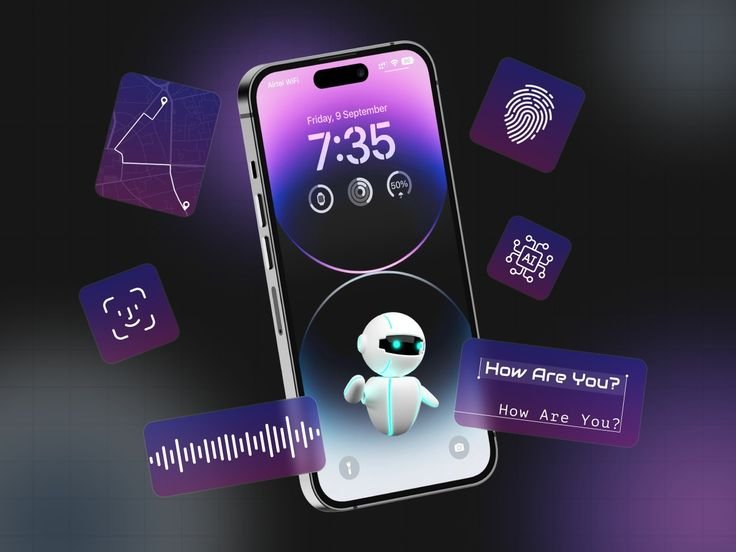Blog
How to Build a Scalable and Secure Mobile App ?
Mobile App Development ▪ 2025-03-07

In today’s fast-paced digital world, building a scalable and secure mobile app is essential for long-term success. Users expect seamless performance, robust security, and the ability to handle high traffic without lags or crashes. A poorly designed app can lead to security breaches, performance issues, and a frustrating user experience.
This guide will provide you with the best practices, technologies, and strategies to develop a mobile app that is both scalable and secure, ensuring its longevity and user satisfaction.
What is Scalability and Why Does It Matter?
Understanding Scalability
Scalability refers to an app’s ability to handle an increasing number of users and data without compromising performance. A scalable app ensures that:
-
Performance remains stable even with high traffic.
-
Response time is fast, regardless of the number of concurrent users.
-
Infrastructure costs are optimized, growing with demand.
Benefits of a Scalable App
-
Improved user experience and retention.
-
Reduced downtime and crashes.
-
Efficient handling of large data volumes.
-
Lower operational costs by leveraging cloud-based scaling solutions.
Key Elements of a Scalable Mobile App
1. Choosing the Right Tech Stack
Selecting the right programming languages, frameworks, and databases plays a crucial role in scalability.
| Component | Recommended Technologies |
|---|---|
| Frontend | React Native, Flutter, Swift (iOS), Kotlin (Android) |
| Backend | Node.js, Django, Spring Boot, Ruby on Rails |
| Database | PostgreSQL, MongoDB, Firebase, Amazon RDS |
| Cloud Hosting | AWS, Google Cloud, Microsoft Azure |
2. Implementing a Microservices Architecture
Instead of using a monolithic structure, break the app into independent microservices. This allows different features to scale separately without affecting the entire system.
3. Using Load Balancers
Load balancing distributes traffic across multiple servers, preventing overload and improving response times.
-
Use AWS Elastic Load Balancing (ELB) or NGINX.
-
Ensure auto-scaling is enabled to handle traffic spikes.
4. Optimizing Database Performance
-
Use NoSQL databases like MongoDB for apps requiring flexibility.
-
Implement database sharding to split large databases for efficiency.
-
Use caching mechanisms like Redis or Memcached to reduce database queries.
5. Content Delivery Networks (CDN)
A CDN like Cloudflare or AWS CloudFront caches static assets (images, videos, CSS files) to ensure fast loading speeds globally.
Security Best Practices for Mobile Apps
1. Secure Authentication and Authorization
-
Use OAuth 2.0, JWT (JSON Web Tokens), or biometric authentication for secure login.
-
Implement two-factor authentication (2FA) to prevent unauthorized access.
2. Secure Data Transmission
-
Enforce HTTPS (SSL/TLS encryption) to protect data during transit.
-
Avoid storing sensitive user data on devices. If needed, encrypt it with AES-256 encryption.
3. Protect Against SQL Injection & XSS Attacks
-
Use prepared statements and parameterized queries.
-
Validate all user inputs to prevent malicious scripts from being injected.
4. Regular Security Updates & Patch Management
-
Keep all third-party libraries and frameworks updated.
-
Regularly conduct penetration testing to identify vulnerabilities.
5. Implement API Security Best Practices
-
Restrict API access using API gateways.
-
Use rate limiting to prevent DDoS attacks.
-
Validate API requests using OAuth tokens and HMAC signatures.
How to Optimize Performance for Scalability
1. Use Asynchronous Processing
Rather than making the app wait for a response, use asynchronous processing to handle background tasks efficiently.
2. Implement Caching Strategies
-
Client-side caching reduces server load.
-
Database query caching speeds up frequently accessed data.
-
Use CDN caching for images, videos, and other static files.
3. Minimize App Startup Time
-
Reduce app size using code minification.
-
Load only essential components first; defer non-critical functions.
4. Optimize Image & Video Handling
-
Use image compression techniques (WebP, AVIF) to reduce file sizes.
-
Implement adaptive streaming (HLS, DASH) for videos.
5. Conduct Performance Testing Regularly
Use tools like Apache JMeter, Google Lighthouse, or New Relic to test app performance under various loads.
Cloud Solutions for Scalable and Secure Mobile Apps
| Cloud Service | Features |
| AWS Lambda | Serverless computing for cost-efficient scaling |
| Google Firebase | Real-time database and authentication services |
| Azure Kubernetes Service (AKS) | Scalable containerized app management |
| Amazon S3 | Secure cloud storage for app data |
Using cloud-based infrastructure ensures cost-effective scalability while maintaining security compliance.
Building a Future-Proof Mobile App: Final Checklist
✔ Choose a scalable tech stack ✔ Implement microservices architecture ✔ Use load balancing & auto-scaling ✔ Secure user authentication with OAuth 2.0 & JWT ✔ Encrypt data in transit and at rest ✔ Perform regular security audits ✔ Optimize database performance with caching & indexing ✔ Utilize cloud computing for cost-efficient scaling ✔ Regularly update dependencies and security patches ✔ Conduct performance testing before launch

